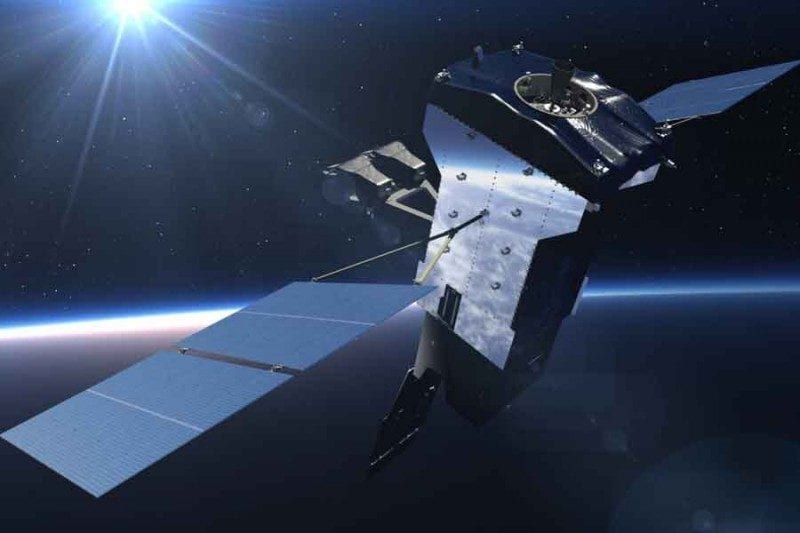Latest News
Lockheed Martin Selects Potential Payload Providers for Next-Gen Missile Warning System

The space-based infrared system GEO-5 satellite. Photo: Lockheed Martin
Lockheed Martin has down-selected Raytheon and a Northrop Grumman–Ball Aerospace team to compete to provide the mission payload for the Air Force’s next-generation missile warning satellite system, the company said Oct. 4.
This competition will be part of the Phase 1 contract for the next-generation overhead persistent infrared (OPIR) Block O Geosynchronous Orbit (GEO) satellites, which will replace the service’s current Space-Based Infrared System (SBIRS) expected to be phased out within the next five years. The award includes development scope through the Critical Design Review (CDR) phase, according to the company.
Lockheed Martin selected the two suppliers 45 days after the company received the prime contractor award on Aug. 14. A final down-select is expected at the end of the CDR phase in 2020, according to the company.
Tom McCormick, Lockheed Martin’s vice president for OPIR systems, said in a statement that Next-Gen OPIR “is a watershed program for the Air Force, and we understand the need to ‘Go Fast’ to ensure our national security posture stays ahead of emerging global threats.” The company is working with the service on initiatives to speed up satellite acquisition, including introducing more commonality of parts and procedures into production, building predictability into schedules and supply chain orders, and incorporating additive manufacturing, he added.
The Air Force has designated the next-gen OPIR program as a pacesetter for its efforts to move more quickly on acquisition and move quickly to make its early missile warning system more survivable and resilient against threats from peer adversaries. The service’s fiscal year 2019 presidential budget request released this past February eliminated funding planned for the final two SBIRS satellites in favor of reallocating those dollars to build a new architecture.
Lockheed Martin won the non-competitive, sole-source contract worth $2.9 billion to produce three geosynchronous satellites, while Northrop Grumman was selected to develop two Polar orbit satellites to complete the Block 0 architecture. Lockheed Martin is targeting the first GEO satellite delivery within 60 months, according to the company.
The Air Force has indicated that it expects the full Block 0 architecture to be online by fiscal year 2029, with initial launch capability by FY 2025. According to a November 2017 notice on FedBizOpps, a full and open competition is expected for the next-generation OPIR Block 1 program, due to begin by mid FY ’20, with an initial launch capability in FY 2030. The Block 1 program will include two satellites to bring the full constellation up to five GEO systems and two Polar satellites.
Get the latest Via Satellite news!
Subscribe Now